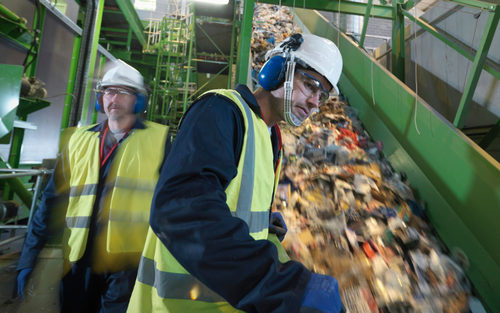Workplace Eye Wellness Month: Protecting Vision in the Workplace
While workplace safety can be prioritized in many industries, eye protection can often be overlooked.. According to the latest US Bureau of Labor Statistics data, workers suffered 18,510 eye-related injuries and illnesses in 2020 alone, resulting in at least one day away from work.
Prevent Blindness, a volunteer eye health and safety organization dedicated to combating blindness and preserving the sense of sight, uses the month of March to remind us of the importance of eye wellness and safety. In recognition of Workplace Eye Wellness Month, we revisit some essential aspects of workplace eye safety.
Understanding Eye Hazards in the Workplace
Workplace environments pose unique challenges to eye health, some of which can cause severe and irreversible damage. Here are some of the most common hazards:
- Dust and debris: These particles can irritate the eyes, causing discomfort and potential infections.
- Flying objects: Sparks, debris, and tools can cause severe eye damage if they strike the eye directly.
- Chemicals: Splashes or fumes from hazardous chemicals can irritate and burn the eyes, leading to temporary or permanent vision loss.
- Radiation: Exposure to ultraviolet (UV) radiation from welding equipment and other similar sources can cause damage to the cornea and retina.
Workplace safety policies should involve an eye safety assessment. Workplace Eye Wellness Month is a timely reminder for companies to revisit and reinforce their commitment to eye safety.
The Importance of Eye Safety Equipment
Appropriate eye protection is essential to safeguarding your vision from workplace eye hazards. The most common types of eye safety equipment include the following:
- Safety glasses: Safety glasses offer essential protection against flying objects, dust, and debris.
- Goggles: Safety goggles provide a more comprehensive range of protection, covering the eyes and the area around them.
- Face shields: Face shieldsoffer full-face protection from splashes, sparks, and flying objects.
- Welding helmets: These speciality helmets are designed to protect the eyes from UV radiation and heat during welding operations.
Employers should be aware of all potential eye hazards in the workplace to provide the most appropriate safety equipment. Contact our worker safety experts for assistance in selecting the correct eye protective gear.
How often should eye safety equipment be replaced or inspected?
Employees should inspect their eye protection for cracks, scratches, and signs of wear before each use. Compromised equipment offers inadequate protection and should be replaced immediately.
In addition to regular inspections, replace eye safety equipment when it reaches the end of its recommended lifespan. Follow the manufacturer's recommendations for specific guidelines on inspection, cleaning, and replacement intervals.
What immediate actions should be taken in the event of an eye injury?
Even with robust safety measures, accidents can still happen. The following steps are crucial for minimizing damage and promoting swift recovery:
- Stop work immediately: Instruct the injured individual to cease all activity and remove themselves from the hazard zone.
- Do not rub or touch the eye: This can further irritate the eye and spread the irritant. If an object is lodged in the eye, don't attempt to remove it, as it could only worsen the injury.
- Seek medical attention: Regardless of the severity of the injury, seek medical attention immediately. Even seemingly minor injuries can lead to complications if not treated promptly.
Once the injured individual is stable, promptly report the incident to the relevant safety manager. This allows for proper documentation, investigation, and implementation of preventive measures to avoid similar incidents in the future.
How can employees be motivated to use eye protection consistently?
Creating a culture of eye safety within the organization is critical to promoting eye wellness. Here are some tips to encourage consistent use of eye protection:
- Provide training and education: Regularly educate employees on the importance of eye safety, highlighting potential risks and consequences of neglecting it.
- Make eye protection readily accessible and available: Ensure appropriate eye protection is available in designated work areas to eliminate any excuses for non-compliance.
- Lead by example: When management and supervisors consistently wear proper eye protection, it sets a positive example, significantly influencing employee behavior.
Workplace Eye Wellness Month reminds us of the critical importance of protecting our vision. By prioritizing eye safety and adhering to the guidelines above, companies can significantly reduce the risk of eye injuries and protect their employees' vision for a healthier and more productive workforce.
Contact PK Safety today for more information on our wide range of eye safety equipment.
Recent Posts
-
April 28 is Workers Memorial Day
Your job shouldn't cost your life, but for some, this has unfortunately been the case. Wo …Apr 26th 2024 -
Promoting Safety: National Work Zone Awareness Week is April 15-19, 2024
Each year, the National Work Zone Awareness Week (NWZAW) places the spotlight on the importance o …Apr 11th 2024 -
Understanding 4 Gas Monitors: How They Work & Why They Are Important
In today’s increasingly dynamic industrial landscape, 4 gas monitors have emerged as critical com …Apr 8th 2024





